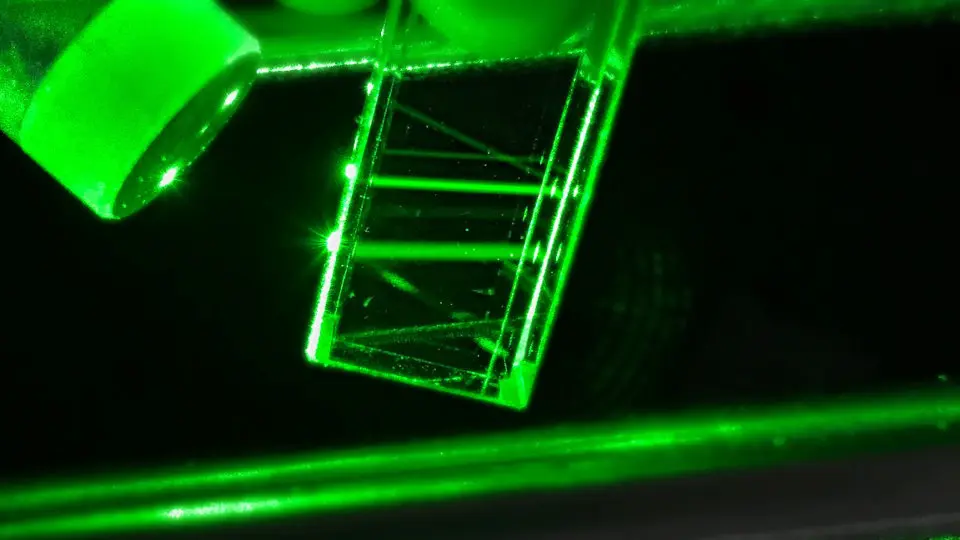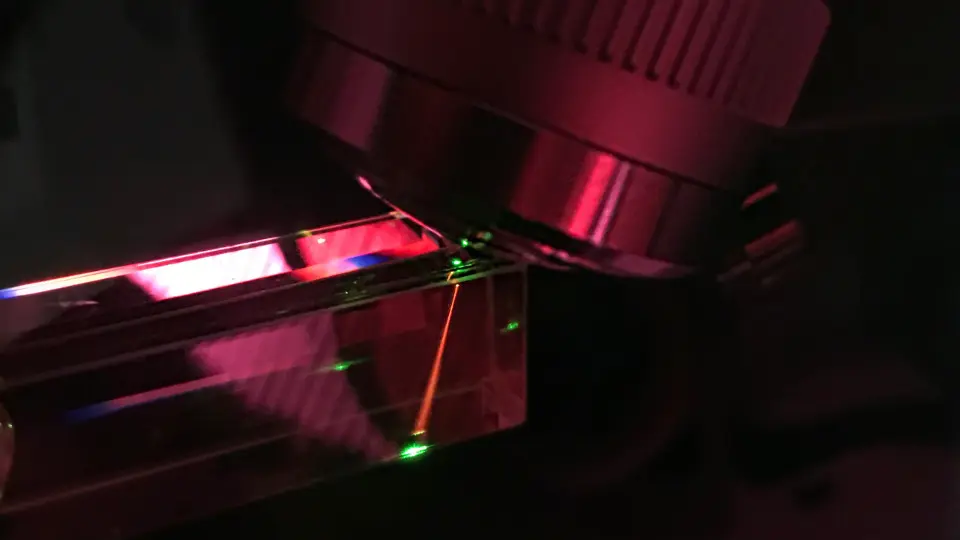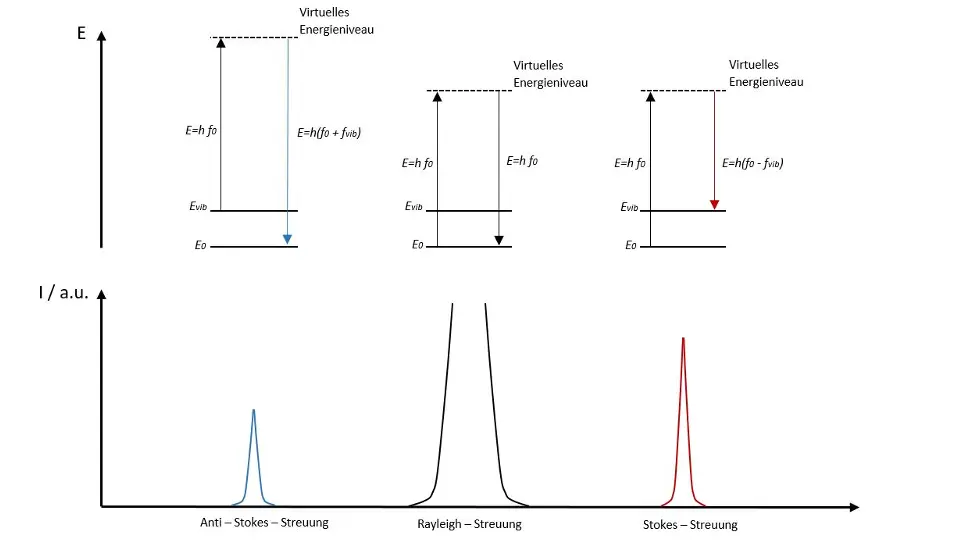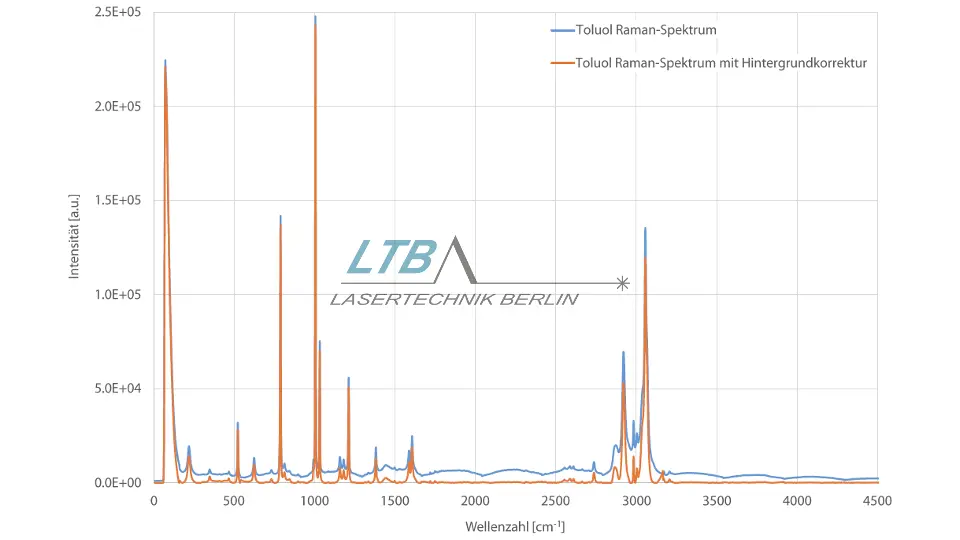
Raman spectroscopy
Raman spectroscopy is a physical measurement method based on Raman scattering, named after Sir C.V. Raman. This globally established method is used for a wide range of material-specific issues, in particular for analyzing the chemical structure of molecules in science and industry.
- Analysis in geochemistry, biochemistry and materials science
- Measurements independent of the aggregate state of the sample
- Method coupling: Raman and laser-induced plasma spectroscopy (LIBS)
- Investigation of chemical composition, crystal orientation, crystal structure, strain, doping and temperature possible

How it works
If a medium is irradiated with a monochromatic light source, a precise spectral examination of the scattered light reveals that it does not only contain the excitation or Rayleigh wavelength. This is due to two different inelastic scattering processes. These result in frequency shifts in relation to the excitation radiation, so-called Stokes and anti-Stokes lines. Molecular bonds of the irradiated matter are excited to characteristic oscillations by the frequency of the incident light. In Raman spectroscopy, the spectra of the scattered light are observed in order to draw conclusions about bonds, radicals and other chemical properties.
Rayleigh, Stokes and anti-Stokes scattering
Stokes and anti-Stokes are arranged symmetrically around the excitation radiation in the spectrum with regard to the wave number. If no characteristic oscillations are induced – i.e. if the process ends energetically at the base level again – this is referred to as Rayleigh scattering. If vibrations or rotations are excited so that incident light is scattered at a frequency below that of the vibrations, Stokes scattering can be observed in the spectrum (shift to lower frequencies). The excitation of an already vibrating or rotating molecular bond and subsequent relaxation to the ground state is referred to as anti-Stokes scattering (shift to higher frequencies). Due to the much higher probability of the Stokes shift according to the Boltzmann distribution, the spectral lines located there are much more intense than those of the anti-Stokes. As a result, it is not uncommon to concentrate on detecting the lower-energy scattered radiation.

Applications
The current scientific and technical development standard offers many spectroscopic methods for drawing conclusions about the characteristics of materials. Raman spectroscopy is particularly suitable for collecting information on the chemical structure of molecules. It is now used not only in scientific laboratories but also in industry and can be carried out regardless of the aggregate state of the sample. One approach pursued by LTB Lasertechnik Berlin is the method coupling of Raman and laser-induced plasma spectroscopy (LIBS), based on detection with echelle spectrometers. This technology coupling enables spatially resolved measurements to obtain information on chemical elements contained in samples as well as the structure, i.e. the bond types and forms of associated molecules. This is suitable for investigating geological materials, for example, whereby the area of application can be individually designed and modified using various system parameters, such as the wavelength of the excitation laser.


